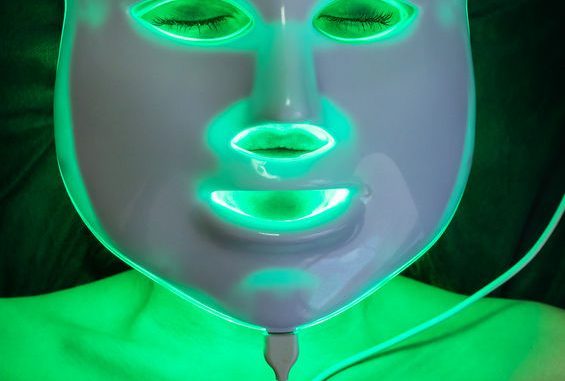
The age of the facial gadget is well and truly here, and LED light therapy devices are at the head of the pack.
Madonna, Victoria Beckham and loads of other celebrities are posing on Instagram in LED light therapy masks promoting their benefits.
Once they were only to be found in the fanciest of salons, but now many beauty brands are offering light therapy devices which can be used at home.
Celebrity endorsement, alongside the lack of access to beauty salons during lockdown, has driven the increasing popularity of these hi-tech devices.
LED light therapy masks look very futuristic and just a bit creepy; many of them also come with a pretty hefty price-tag!

The question is how do they actually work, are they safe and is it worth investing in a home device?
How do light therapy devices work?
LED Light Therapy is a non-invasive treatment which has been around for more than 30 years.
The devices omit coloured wavelengths of visible light (from around 400–700 nanometers on the electromagnetic spectrum) onto the skin. They don’t omit damaging ultraviolet wavelengths.
Different wavelengths of light penetrate the skin and each colour has a specific skin benefit. These range from reducing the appearance of fine lines, wrinkles and age spots to helping treat acne.
The most common wavelengths of light used for skin therapies are red, blue and green.
Red Light
Red light penetrates deep into the skin and is thought to work by increasing the activity of mitochondria in the cells of the dermis of the skin.
Mitochondria are the parts of the cell which release energy. With more energy, skin cells can function more efficiently and regenerate more quickly. This means that tissues repair more quickly. In fact one of the first uses of red light therapy was to speed up wound healing.
Research has shown that treatment with red light can increase collagen production in skin cells. This protein makes your skin look smoother and plumper. We produce less of it as we age, so light therapy could give the skin a very welcome boost of collagen.
Other studies have shown that red light can reduce the appearance of wrinkles. It is also thought to improve circulation and reduce inflammation which could make it a useful treatment for both eczema and psoriasis.
More research is needed, but there’s some evidence to suggest that red light therapy benefits the skin
Blue light
Blue light doesn’t penetrate the skin as deeply as red light. It targets the sebaceous glands on the skins surface, making them less active.
These glands produce the oil which lubricates your skin and prevents it drying out. They tend to be overactive in people with acne and oily skin conditions, so less active sebaceous glands should mean fewer acne breakouts. There is some research which supports this conclusion, although the clinical studies that have been done so far have been relatively small and of short duration.
Blue light also kills bacteria on the skin surface, particularly those that cause acne. Research has shown that blue light devices are an effective way to reduce inflamed lesions from facial acne. Another study showed that acne was reduced after 8 treatments over a 4-week period with an at-home light treatment device.
Green Light
In theory, green light targets unwanted dark spots also called age spots.
These are caused by overproduction of the pigment melanin by melanocytes in the bottom layer of the skin’s epidermis.
It is suggested that green light therapy reduces the activity of melanocytes and slows the production of melanin. It is also suggested that it breaks up melanin clusters to fade existing dark spots.
Are Light Therapy Devices Safe?
Yes. Most experts agree that LED light therapy devices are safe, since they’re non-invasive and don’t emit UV light.
Of course it is essential that with a home device you follow the instructions, only use them for the recommended amounts of time and protect your eyes. Check for safety features like automatic shut-off, heat regulators and timers on devices before you buy.
Having said all that, there may still be some risks and it is wise to be cautious.
If you use Isotretinoin (Roaccutane) to treat your acne, be aware that this drug increases your skin’s sensitivity to light. Check with your doctor before you begin any light therapy treatment.
It would also be wise not to use LED light therapy if you’re using anything on your skin that makes you sensitive to sunlight.
Talk with your doctor if you have psoriasis. Red light therapy could help but only if you use it in conjunction with your regularly prescribed treatments.

We have a range of light therapy devices available through our shop. Take a look!
Leave a Reply